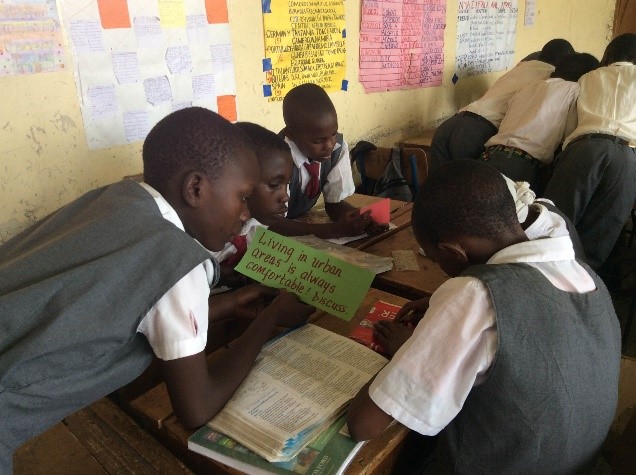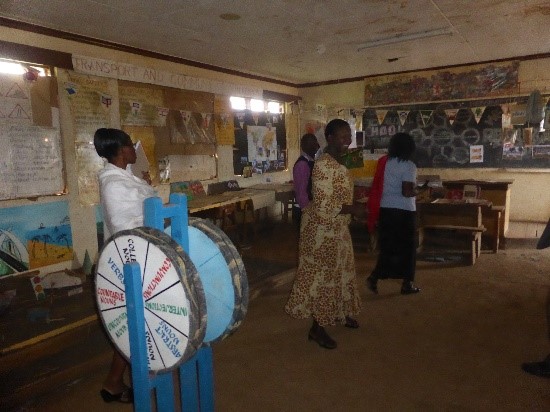Week 4: Working with communities, families and stakeholders
| Site: | OpenLearn Create |
| Course: | Creating an Inclusive School |
| Book: | Week 4: Working with communities, families and stakeholders |
| Printed by: | Guest user |
| Date: | Tuesday, 2 December 2025, 6:32 PM |
1. Introduction to Week 4
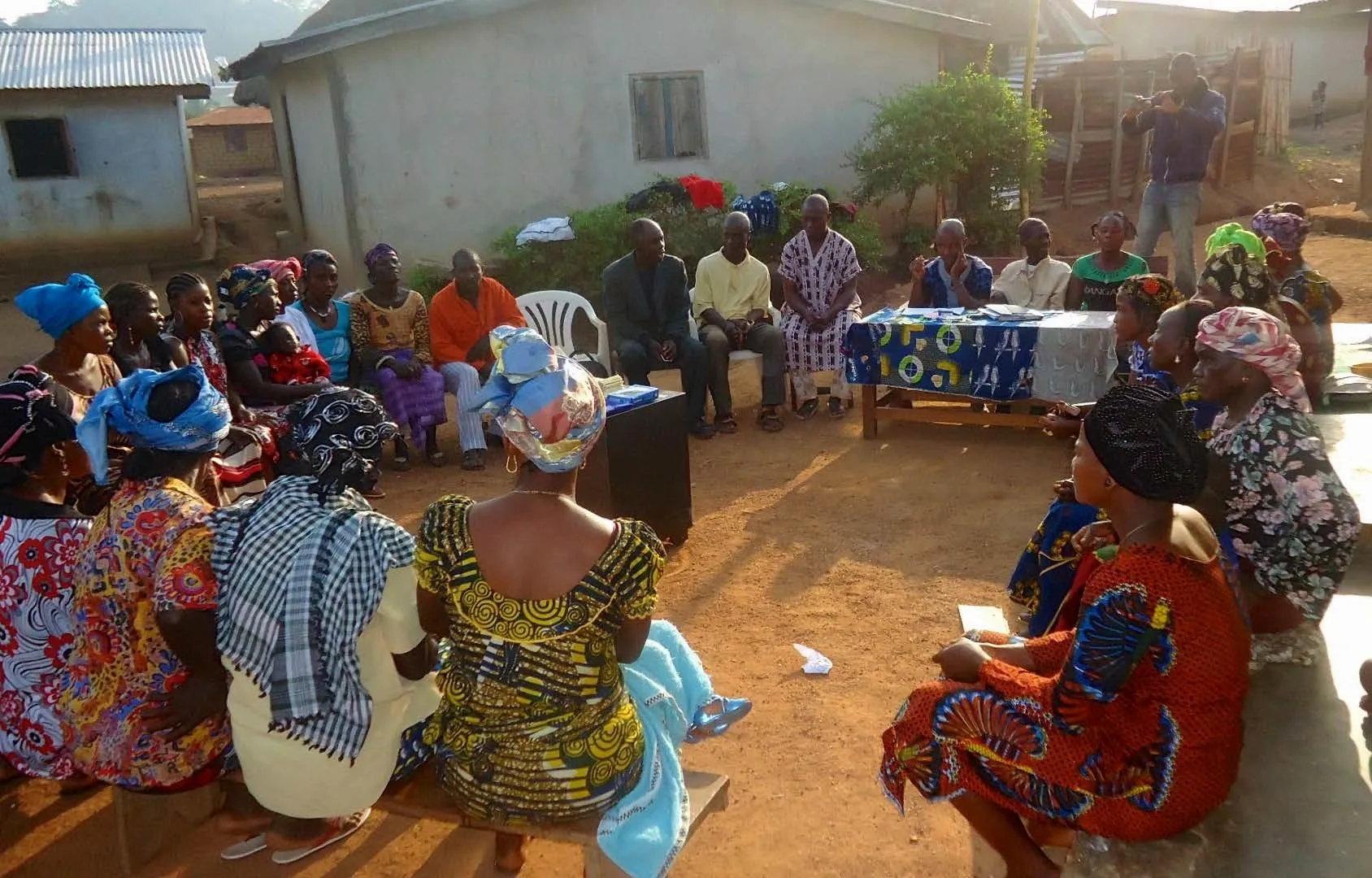
It takes a village to raise a child
As an inclusive teacher, leader or volunteer, working to create an inclusive school you are not alone in your responsibilities. In your professional role you are part of teams, communities and partnerships, all working for the benefit of all children, but particularly those with special needs. Everyone can do something, and we can do more together.
Faced with the data of large numbers of children not accessing or fully participating in school, schools need to do all they can to work with others and welcome in community organisations and stakeholders.
Week 4 of this course will help you to think about examples of partnerships between schools and others including families and community organisations. These may be small or large, run by volunteers or fully funded. What these people share is a strong drive to make changes to benefit all children especially marginalised children .
It is often said that working together is better because it can achieve more, but how to start?
As you work through this week’s examples of partnerships with families and communities please think about your own context and your stakeholders. Perhaps you don’t see them every day or perhaps you know a school which is isolated and would benefit from a wider network of help. At the end of the week, you will be able to visualise a network in the form of a mind map showing who is connected with your school or organisation, or one that you know, and how this network can work together to create an inclusive school.
In total there are nine activities in this week, and the end of course assessment.
1.1. Activities for week 4
|
Activity number |
Title |
Details |
Time |
|
4.1 |
It takes a village to raise a child |
Design a mind map of influences on a child’s life with the child at the centre |
30 minutes |
|
4.2 |
Working with families |
Read a mini case study and take notes |
20 mins |
|
4.3 |
Consulting students |
Read a blog post in which girls were consulted about an initiative to support them |
20 mins |
|
4.4 |
School based partnerships Ebhotwe Primary School , South Africa |
Watch a video and make notes |
20 minutes |
|
4.5 |
Practical benefits to schools Humanity & Inclusion Sierra Leone Itinerant teachers |
Read two case studies about itinerant teachers and community rehabilitation and think about the benefits then share your views on the forum
|
30 minutes |
|
4.6 |
Can we do better? Survey |
Read key points from survey and answer prompts |
30 mins |
|
4.7 |
Mind map of stakeholders |
Apply this week’s learning to complete a stakeholder map with a photograph |
30 mins |
|
4.8 |
Supporting Change |
Case study from a school in Kenya that implemented change |
20 mins |
|
4.9 |
How inclusive is this course? |
Reflect on your experience of studying this course |
15 mins |
|
4.10 |
End of course assessment |
Write a blog post |
20 mins |
2. Creating community connections
In school, teachers meet many children and cannot possibly know everything about their lives. They might have an invisible difficulty or problems resulting from poverty. Not all disabilities are visible or physical. What we know about a child’s learning needs, their self-esteem, what they like and what they find difficult, will depend on who we ask, what data we have and where we observe the child.
By working in teams we can pool our different expertise, share information and come up with ideas. By working together and communicating regularly with parents, community leaders and charities, we are acknowledging that disabled children often face several connected barriers. It is well-known for example that disabled girls, for example, are more likely to be out of school than disabled boys. We start this week exploring different types of partnership teams.
|
Reflection Point Have you had experience of working with parents, the school management committee of community groups in your professional role? What did you gain from that interaction and why? |
2.1. Mapping community and stakeholder connections
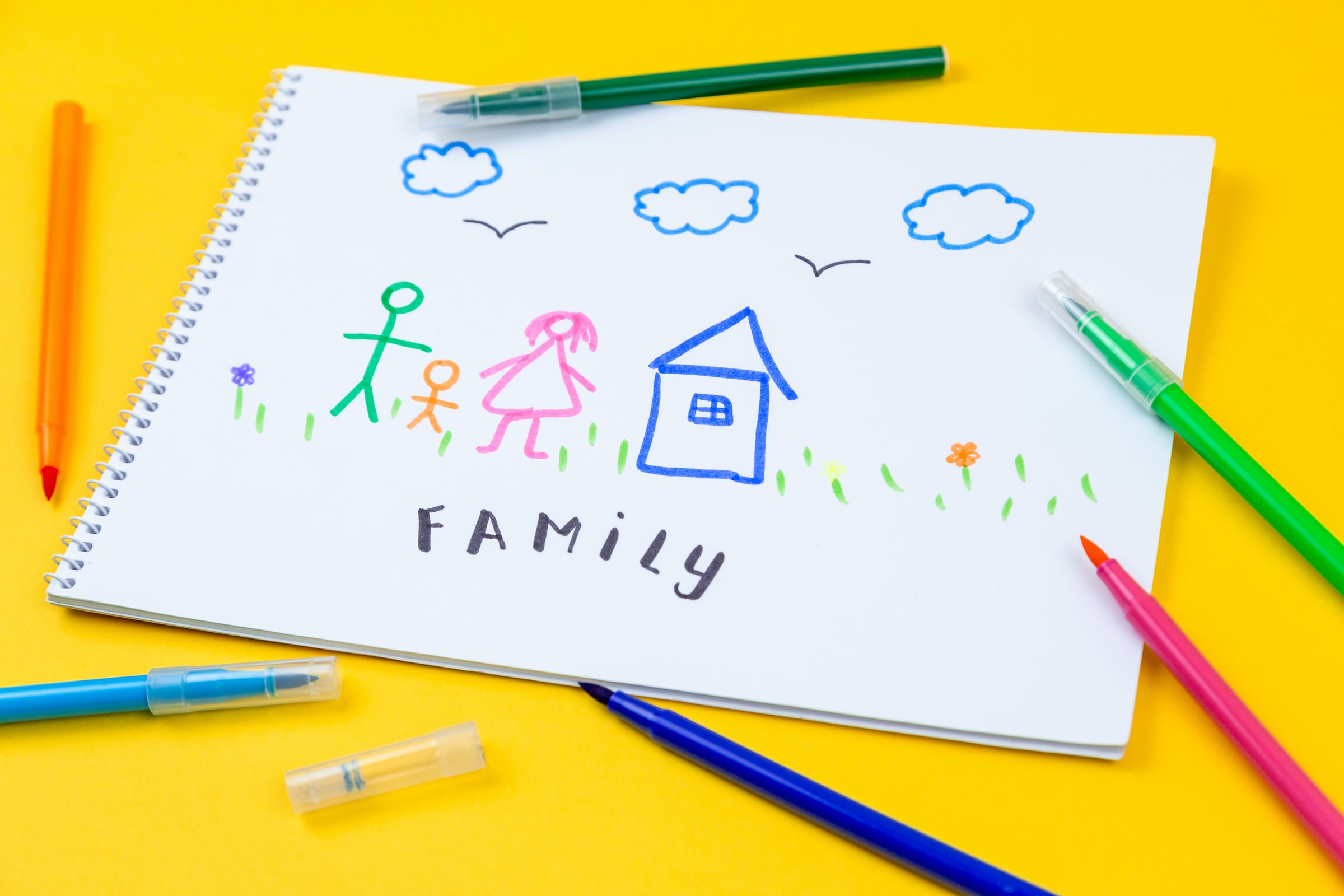
|
Reflection Point What do you think about the proverb “It takes a village to raise a child?” Do you agree or disagree? Think how it could it be a positive story of elders sharing wisdom to socialise a child or harmful to a child’s development when old ideas and stigmas stop the child attending school. |
This week explores the idea of a village in a wide sense as community outside and inside the school. Think about how a community organisation might approach a school about girls not coming to school because of safety concerns. Or a group of schools might share a specialist teacher for deaf children and set up training for teachers.
Think about partnerships, communities and outside organisations in your context as you read Week 4. You will end the week by creating a stakeholder map relevant to your context. In this first activity you will think about different influences on a child’s development.
Activity 4.1 It takes a village….Allow approximately 30 minutes for this activity.
You will return to this mind map at the end of the week so please keep thinking about the idea of community connections and who your own stakeholders are. |
So far this discussion has helped show the need to be aware of positive and negative influences on a child’s life. Community organisations are often working on changing attitudes by sensitisation and information and building bridges. Schools and teachers may need family members or others to support children’s social and emotional development as well as helping them make academic progress. You will start by considering how schools work with families and students to become more inclusive.
2.2. Working with stakeholders - parents, carers and families
Just as every child is unique so is every family and their circumstances. Teachers may not know if “family” means a step-parent, grandparent or other relative or migrant worker as care giver but they may see the impact positive or negative on the child in their classroom.
We asked a focus group of global educators to contribute their experiences to this course. They said teachers have to be prepared that some parents might be positive and proactive in working together for their child’s needs, but others might have low expectations, negative attitudes or be in denial about what can be done. Whether positive or negative, educators believed it is important to attempt to reach all families and to give an individualised approach.
You might want to think about reasons why some families are hard to reach. For example, is it because they are too busy working or too ill due or too poor or too afraid to approach teachers?
A leader of a school may have to work hard and take time to build trust with some families. When the aim is to develop a real dialogue with a two-way flow of information and work together then there may need to be training for teachers to overcome stereotypes about a language minority or poor parents. It is important to make use of facts and data and to work beyond “a deficit mode” or negative view of a poor or stigmatised community. As part of this access to data can help to target specific groups including children who are missing from school.
Next please work through two activities about improving work with families and communities.
Activity 4.2 Working with familiesAllow approximately 20 minutes for this activity. Read this short case study of leadership of a primary school in Jamaica and then write in your notebook. The new headteacher is keen to welcome parents into the school to support children’s learning. He believes the school belongs to everyone in the community and that everyone should have a place and a voice. Since arriving in post, he has made several changes to increase family participation.
|
2.3. Listening to the experiences of children
Children are experts on their own experiences, but they are not often consulted directly, perhaps because they do not have much power. They are beneficiaries of a good school, but also active participants. In this section you will think about ways to find out about children’s experiences through observation and by asking them directly. This adds to the story because the information is from the child not just about them.
School record keeping and information on children with disabilities can help all teachers adapt their lessons and help the school to plan for extra support. Mariga, McKonkey and Myezwa (2014) suggest that firstly teachers and support teams should make a general assessment of these key areas to identify where a child might need help.
Another way of collecting information is by observing the child during the school day, talking to their caregivers about what they find difficult and asking the child themselves if there is something they would like more help with. The United Nations Convention on the Rights of the Child emphasises the importance of including children in decision making about their lives.
Article 12: every child has the right to express their views, feelings and wishes in all matters affecting them, and to have their views considered and taken seriously. This right applies at all times, for example during immigration proceedings, housing decisions or the child’s day-to-day home life. (UNICEF 2020)
In a school with an inclusive ethos and culture children can be consulted through asking them about their likes and dislikes for learning and support. Young children or those with communication difficulties can share their ideas in drawings. All children can be asked to share their self-assessment of how they have managed with tasks. This could be by marking or giving verbal feedback on their own and others’ work. They could use a smiley face or thumbs up hand gesture to show when they feel they have done well, a neutral face picture, or wavey hand to indicate ‘okay’ and a thumbs down or sad face for when work was hard.
😊 😐 😢
|
Reflection point Internationally there is a considerable amount of literature on what has become known as ‘student voice’. This describes formal structures such as school councils. But there are also informal ways to find out what students think about being at school. Think about a school that you are familiar with – somewhere where you work, or have worked in the past. What did the students think about your school? Your subject? How did you know, or how could you have found out? |
Activity 4.3 Consulting studentsAllow 20 mins for this activity Read this account of an outside organisation working to give girls’ a voice: Why are direct words from children powerful? Make notes on the challenges around collecting the views of children in your context. Optional readings: The blog post above has links to related posts. Choose one or more that looks interesting in the context of your role and read them. |
3. Working with stakeholders - teams across the community
In a community there may be several stakeholders working to support a child. You will revisit the video of support teams at Ebhotwe Primary school in a poor district of South Africa . It is a hub school for the district with a number of teams inside and outside the school community. Inside the school, one team has specialists working side by side with teachers on adapting materials for learners with specific learning needs and assisting them in class. They also assist neighbouring schools. Another team of community volunteers come into the school with food for children and offers support for families with HIV.
A network of teams like this may depend on policies and also needs time and resources to develop. It involves leadership from governors (or the School Management Committee) and connections with specialists and voluntary organisations. Developing teams may be a goal of a school management strategy and part of a district or national policy plan for capacity building of networks.
Activitiy 4.4 Ebhotwe Primary School : school-based partnershipsAllow approximately 20 mins on this activity Watch the clip from the film Developing Inclusive Education in South Africa: Support Structures and find out about the teams and community context at Ebhotwe Primary school. Please watch the section from 0.48 to 5.38 ending with one teacher’s reflection: “Inclusive education is not about being perfect it’s about understanding the strengths and the can do’s of the particular person” Makes notes on:
|
3.1. Working with stakeholders- outside agencies
In this section you are going to read an example of an outside organisation, an NGO, working with schools and communities. As you read, reflect on how working together can bring benefits. Think about how this joint work might succeed in improving lives and attitudes in very practical ways such as developing new teacher training or having more classroom resources.
|
Example: Itinerant teachers in Sierra Leone In Sierra Leone Abdul is a specialist inclusion teacher who travels to support children and teachers to create inclusive schools. Abdul enjoys this role: he doesn’t just work in one school he works in many. On a typical day his work is supporting teachers, another day working with learners and their parents. Most of the work is about adapting for mild learning disabilities such as attention and behaviour difficulties and children do not need a medical diagnosis to join the programme In one school he sits with a group of teachers to make classroom resources painting brightly coloured plastic bottles. In another school he observes an unqualified teacher in a classroom and makes suggestions so a child can be included. This is hands-on professional development inside the school and builds up resources, ideas and an inclusive culture. Abdul supports Aimee, 8, who has difficulty grasping a pen because of weakness on her left side and has fallen behind her peers with reading and writing. Twice a month he visits Aime in school and at home to see how she is progressing. Every month he meets the parents at community meetings and is pleased to see her confidence and enjoyment of school growing and the parents understanding how she is overcoming difficulties. The school and parents meet with Abdul to agree and adjust an individual education based on her own strengths and weaknesses. Some adjustments have been made to the school including bigger windows for light and accessible toilets. For another learner, he talks through who can help the child with homework. After some time, they find an uncle, teacher in another district who is happy to support. Right now, are five itinerant teachers like Abdul as a part of a pilot led by Humanity and Inclusion in Sierra Leone, funded by the UK aid Girls Education Challenge. CWD are more likely to repeat a year or not attend school. The itinerant teacher model began in Cambodia and has also been developed in Togo where some itinerant teachers offer specialist braille support and work with communities, parents and schools so that more children with disabilities can stay in school. |
Activity 4.5 Practical benefits to schools of outside organisationsAllow approximately 30 mins for this activity.
Please share your thoughts on these cases on Week 4 forum and comment on any other examples of schools working with outside organisations. |
3.2. Relationships, networks and social capital- can we do better in stakeholder relations?
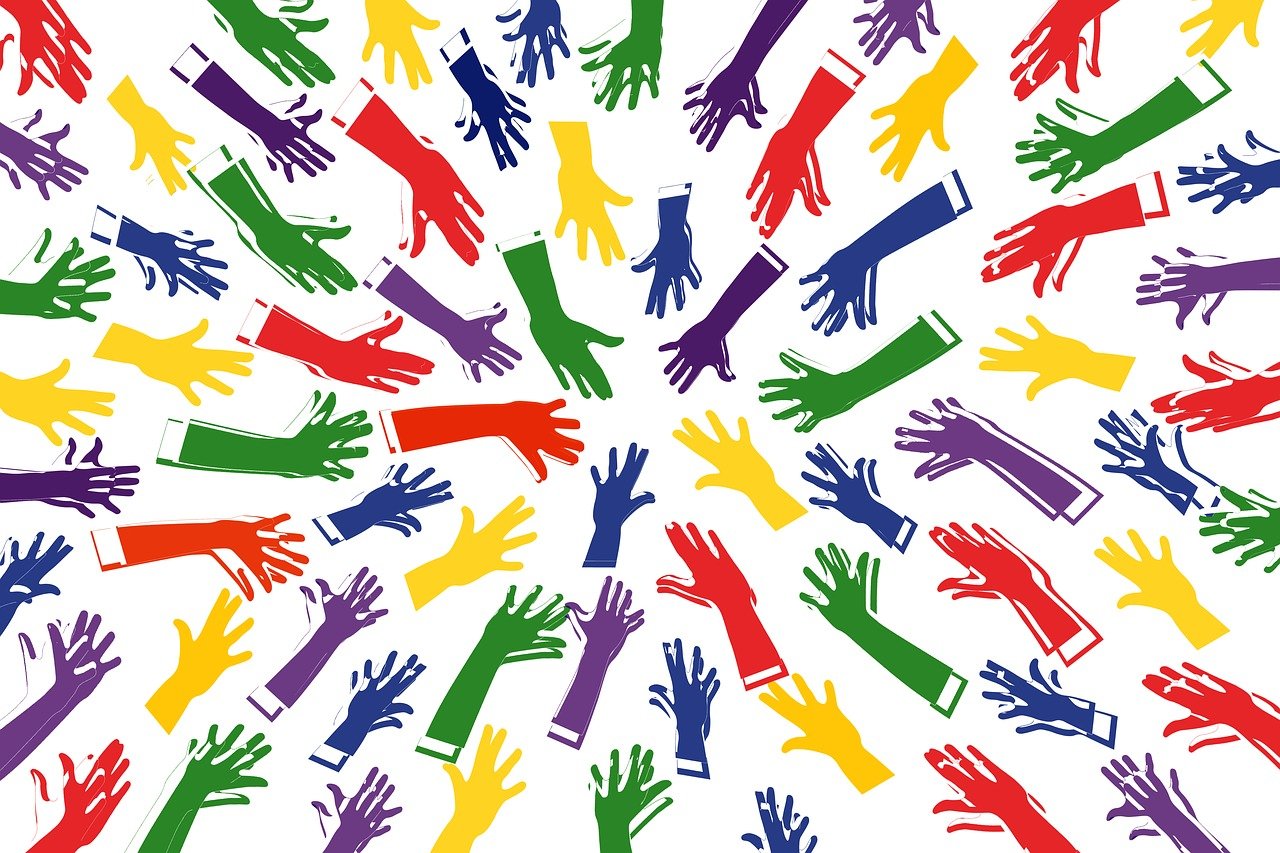
You have seen examples of inclusive schools putting the child at the centre and building quality relationships between teachers, between learners and between the school and community. You have begun a mind map of interconnected influences on a child’s life and you will add to this at the end of the week. Relationships with stakeholders take time. Feeling that you belong to a village, a community or to a school can give a sense of strength and identity. Feeling that you don’t belong or are not welcome can make someone vulnerable and powerless.
One way of referring to links and connections in social relationships between groups is “social capital” an idea which comes from sociology. Strong social capital might be seen as for the common good but weak social capital means limited or trust or different expectations hindering partnership.
If there is strong ‘social capital’, there will be a wide range of mutually respectful and supportive relations with individuals and groups who can be called upon to support the child and/or family.
Children in danger of exclusion and their families have weak social capital because of poor attitudes from wider society and prejudice.
Thinking about the quality of partnerships is important. Just as it is not enough to bring a child with disabilities into a school and assume that is enough, so working with stakeholders needs to be developed and evaluated.
|
Reflection Point How can a school help increase the reserves of social capital for all their pupils? |
Activity 4.6 Can we do better ? Kenya survey on improving school-family-community relationshipsAllow approximately 30 minutes for this activity.
In one area of Kenya, a large survey of how primary schools practiced school- family community relationships found different examples of activities with some strengths and some areas of improvement (Nyatuka, B.O. (2017). They wanted to find out how to make the family and community relationships stronger. The activities they surveyed were:-
In area surveyed, two key areas recommended for improvement. They were: 1) Appreciating professionals for their contribution and 2) providing information. You might be surprised because these activities are relatively easy to do but rely on good communication. This links to the work you did in Week 3 on monitoring a school for inclusivity. Are there any questions linked to improving school-family-community-relationships that you would also want to ask if you were planning a similar survey? |
4. Understanding inclusive education stakeholders
Now you have reached the end of Week 4 you should have a good understanding of what it means to work with others outside your school. You should know that this will depend on your context, your leadership role and your social capital. You should know that different stakeholders can contribute different knowledge to support a child and to build an inclusive school and that data can strengthen your argument for the need for extra support.
The next activity is to develop a mind relevant to your context, which will serve as a practical tool as you continue to work with colleagues to create an inclusive school.
Activity 4.7 Mind map of stakeholdersAllow approximately 30 mins for this activity Use what you have learned about building links, teams and partnerships and return to your mind map from the start of the week. Now redesign this as stakeholder map for a school in your context. Add clear links. Add relevant data. Add three sentences suggesting changes you might make in working with stakeholders and how this could support inclusivity. |
4.1. Managing change
Creating an inclusive school which works effectively with the wider community and has classrooms that reflect learner-centred attitudes and values, requires change. Change will be slow, but small changes in practice, will challenge attitudes to learners and will eventually lead to a more inclusive school. Here, you will engage with an example which demonstrates how change can take place.
In Kenya, Government policy is that teaching should be more inclusive and more learner-centred, with a greater emphasis on teaching skills and values, alongside knowledge. As result, a new Competency Based Curriculum (CBC) has been developed.
The example below demonstrates how, overtime, small changes in practice can lead to significant improvements for learners. It took place before the CBC was implemented but was being talked about.
Activity 4.8: Supporting changeYou are advised to spend 20 mins on this activity Read the example below and write notes in response to these questions in your notebook.
|
|
Egerton Primary School Teachers at Egerton primary school in Kenya were introduced to the TESSA OER (www.tessafrica.net) in 2008, by academics from Egerton University. The TESSA OER help teachers to develop active approaches to learning and teaching, through the provision of classroom examples, which model learner-centred attitudes. Academics visited the school to support teachers in using the resources. Inspired by some of the classroom activities described in the resources, the teachers re-arranged their classrooms so that children sat at tables, in groups, rather than in rows. This meant they could discuss things in groups and pairs, more easily.
They also developed a resource centre where teachers were encouraged to store and share teaching resources they made from local materials.
As a result of more pair work and group work, teachers noticed that some of the children in Grade 4 could not read well-enough to access the subject-based curriculum. They therefore started a whole-school focus on literacy and harnessed the local community to help them build a school library. Parents act as volunteers, coming to be in the library and listening to children read; the local Church under took some fundraising activities so the school could print off stories from the AfricanStory Book website (www.africanstorybook.org) in the local languages and a local charity donated books in English obtained from abroad. A small change – sitting students so they could take part more easily in pair and group work – has led to a whole school project, specifically targeting literacy. This was because by providing opportunities for learners to talk about their work, they realised things about them that had previously gone unnoticed. Using TESSA OER did not solve the problem of low levels of achievement and a lack of teaching resources, but it put the school on to a different trajectory. It enabled them to identify a reason why achievement levels were low and inspired them to do something about it. It also highlighted specific tasks that the local community could become involved in, bringing them into school and building productive relationships. |
4.2. Optional reading
Dr Patriciah Wambugu, a Senior Lecturer at Egerton University was involved in evaluating professional development activities at Egerton. You might like to read the paper that she wrote about the experience.
Wambugu, P., Stutchbury, K., & Dickie, J. (2019). Challenges and Opportunities in the Implementation of School-Based Teacher Professional Development: A Case from Kenya. Journal of Learning for Development, 6(1), 76–82.
5. Bringing it all together
This final section of the course, provides the opportunity for you to reflect on your learning and to consider how you will build on what you have learnt. The introductory video suggested that these two courses (Inclusive Teaching and Learning and Creating an Inclusive School) are intended to start you on a journey of professional development and to provide tools that you can use now and in the future to improve your practice whether you are a classroom teacher, head teacher, teacher educator, or have some other role within the sector.
Activity 4.9: How inclusive is this course?You are advised to spend 15 mins on this activity You would expect a course about ‘inclusive education’ to be inclusive in its design. Reflect on your experience of studying this course and ‘Inclusive teaching and learning’ (if you did it). In what ways has the learning design modelled inclusive practices? |
Activity 4.10: End of course assessment - Bringing it all togetherYou are advised to spend 20 mins on this activity Look back through the notes that you have made whilst completing the activities in this course, and highlight some of the key points. On the Week 4 forum, tell us two things that you will take forward from this course into your practice. Try to provide detail. For example: ‘I have learnt how to create a positive ethos in my classroom’ could mean many things. It would be good to know how you will actually do this. ‘I intend to create a buddy system in my classroom so that learners who experience difficulties are supported’ or, ‘I will use the Key Resources from the COL website to increase the range of teaching approaches that I use’. |
Please confirm you have completed this activity and contributed to the forum.
Please now complete the course completion information.
References
Mariga, L., McConkey, R. and Myezwa, H. (2014) Inclusive Education in Low-Income Countries: A resource book for teacher educators, parent trainers and community development workers, Cape Town: Atlas Alliance and Disability Innovations Africa. https://www.eenet.org.uk/resources/docs/Inclusive_Education_in_Low_Income_Cou ntries.pdf
Nyatuka, B.O. (2017), "A survey of school-family-community partnerships in Kenya", Journal of Professional Capital and Community, Vol. 2 No. 4, pp. 229-243. https://doi.org/10.1108/JPCC-04-2017-0010
Every Learner Matters: Unpacking the learning crisis for children with disabilities
© 2019 International Bank for Reconstruction and Development / International Development Association or The World Bank
